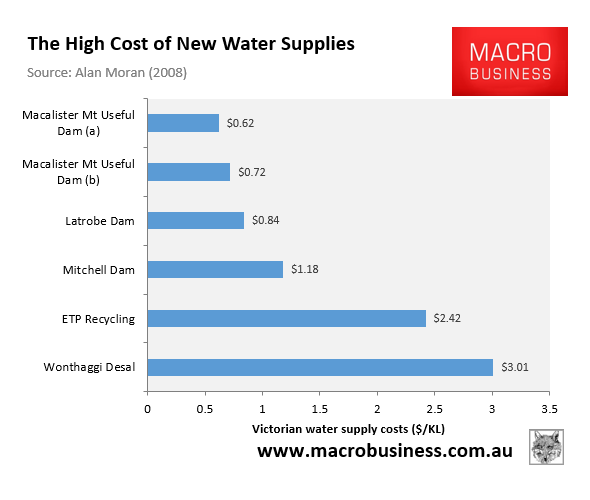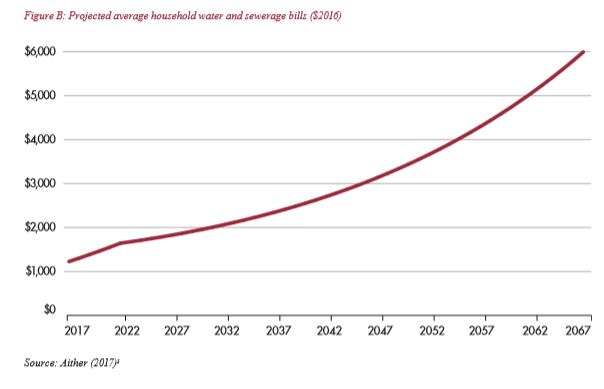The SMH reported on Monday that “Sydney’s running out of water” and “the problem will get worse as climate change triggers more intense and frequent extreme weather, and our population booms”.
“The problem is that to fill its dams, Sydney relies heavily on rainwater, which is then used for drinking water. But as these dry up, our water supply dwindles”.
“The Greater Sydney Water strategy, published in 2021, shows by 2060, the city’s water needs will increase by 250 gigalitres of drinking water per year – that’s equivalent to about half the volume of Sydney Harbour”.
Stuart Khan, a professor at the University of NSW, says Sydney’s water “demands already exceed our supply”, and that the city will need to invest in more desalination plants to augment its supplies as the population booms.
However, providing desalinated water on the coast to the booming Western Sydney is inherently problematic and expensive.
“We need to build more desalination plants, which are great for supplying water to coastal areas, but we need to also be thinking about how to get water to our most increasing demand areas, which will be in western Sydney. That will be the challenge”.
“We can’t pump water from the coast to western Sydney: it would have to go under roads, under an entire city. That is simply not a realistic option”.
“We need to think more broadly about how we diversify beyond seawater desalination”, Khan says.
“When we have a drought and there is no rain, we suffer directly. The dams stop filling up and there are water restrictions, and we run out of water. It’s a cycle Sydney will continue until there’s increased water supply”.
If climate change will reduce rainfall and Australia confronts chronic future water shortages, then why is the federal government pursuing an aggressive population growth strategy?
Why are we running a mass immigration Big Australia policy in the world’s driest continent?
According to the 2023 Intergenerational Report, Australia’s population will reach 40.5 million by 2062-63, driven by long-term net overseas migration (NOM) of 235,000 a year:

That means the nation will grow by the combined populations of Sydney, Melbourne, Brisbane and Adelaide in only 40 years, with Sydney and Melbourne growing to cities of around 9 million people each.
Only four years ago, Australia suffered a severe drought, with water supplies running dangerously low.
What will happen the next time there is a drought and Australia has to supply water and food to millions more people?
To accommodate the additional 14.2 million people, Australia will need to construct a battery of costly, energy-intensive, and environmentally damaging desalination plants. Desalination is significantly more expensive than traditional sources, hence this will raise water costs.

Providing desalinated water to inland areas like Western Sydney is also inherently difficult and expensive.
This means that residential and business water prices would have to rise to accommodate the federal government’s mass immigration policy, which will impact lower-income households disproportionately.
According to Infrastructure Australia, real household water bills would more than quadruple due to population growth and climate change, rising from $1,226 in 2017 to $6,000 in 2067:

Water is yet another illustration of how the ‘Big Australia’ mass immigration policy devastates working-class living standards as well as the environment.
Limiting immigration to the pre-2005 average level of around 100,000 people is the simplest and most cost-effective thing our policymakers can do to protect the country’s water supply.
Because the federal government’s ‘Big Australia’ mass immigration policy is the greatest threat to Australia’s water supply.

